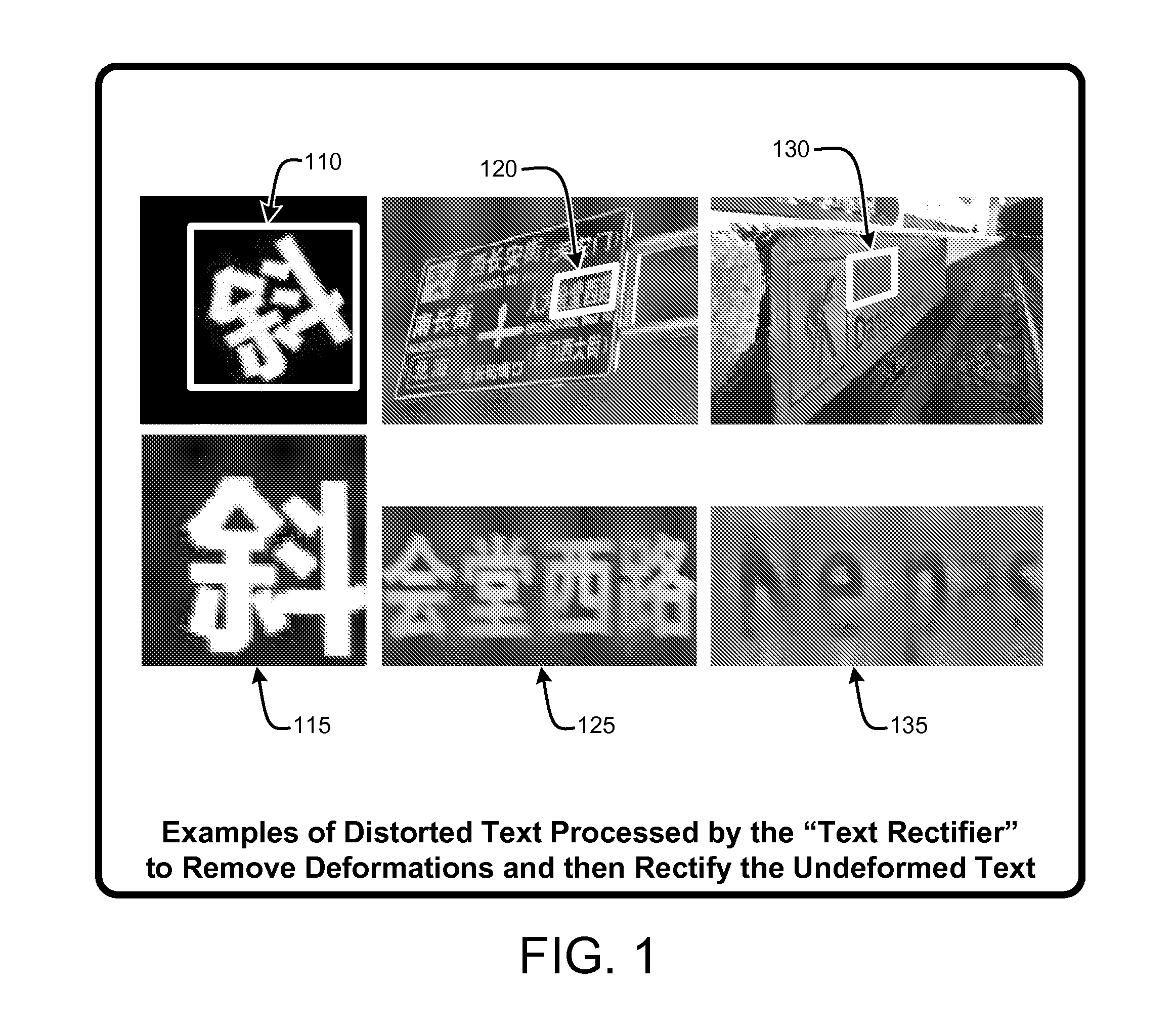Rectification of characters and text as transform invariant low-rank textures
a transform and low-rank texture technology, applied in the field of text rectifier, can solve the problems of scanned texts being significantly warped, the recognition performance of input characters is rather sensitive to deformation, and the typical ocr technique is known to perform more poorly, so as to improve the results of existing ocr engines, accurate recovery of intrinsic low-rank textures, and precise domain transformations
- Summary
- Abstract
- Description
- Claims
- Application Information
AI Technical Summary
Benefits of technology
Problems solved by technology
Method used
Image
Examples
Embodiment Construction
[0027]In the following description of the embodiments of the claimed subject matter, reference is made to the accompanying drawings, which form a part hereof, and in which is shown by way of illustration specific embodiments in which the claimed subject matter may be practiced. It should be understood that other embodiments may be utilized and structural changes may be made without departing from the scope of the presently claimed subject matter.
[0028]1.0 Introduction:
[0029]In general, a “Text Rectifier,” as described herein, provides various techniques for processing selected regions of an image containing text or characters by treating those images as matrices of low-rank textures and using a rank minimization technique that recovers and removes image deformations while rectifying the text or characters in the selected image region to a typical upright position or orientation (i.e., the position in which text is normally intended to be read). Note that this typical upright positio...
PUM
 Login to View More
Login to View More Abstract
Description
Claims
Application Information
 Login to View More
Login to View More - R&D
- Intellectual Property
- Life Sciences
- Materials
- Tech Scout
- Unparalleled Data Quality
- Higher Quality Content
- 60% Fewer Hallucinations
Browse by: Latest US Patents, China's latest patents, Technical Efficacy Thesaurus, Application Domain, Technology Topic, Popular Technical Reports.
© 2025 PatSnap. All rights reserved.Legal|Privacy policy|Modern Slavery Act Transparency Statement|Sitemap|About US| Contact US: help@patsnap.com



